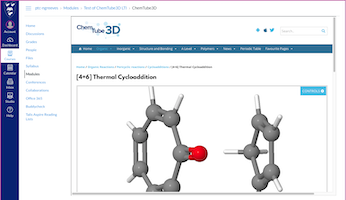| Developer(s) | PerkinElmer |
|---|---|
| Stable release | |
| Operating system | macOS, Microsoft Windows |
| Type | Scientific |
| License | Proprietary |
| Website | ChemDraw on PerkinElmer site |
CS Chem3D Std 4.0. ChemBio3D allow you to explore structure of chemical and biological models. ChemBio3D Ultra 12.0 brings workstation-quality molecular graphics and rigorous computational methods to your desktop, allowing you to explore the structure of large chemical and biological models. The Structure Browser is a new tool for viewing sets. Chem3D brings workstation-quality molecular graphics and rigorous computational methods to your desktop. Integration with molecular analysis makes Chem3D the ideal software for chemists and biochemists. The ChemBio3D software suite also includes ChemDraw, ChemFinder, and E-Notebook. Features include state-of-the-art protein.
ChemDraw is a molecule editor first developed in 1985 by David A. Evans and Stewart Rubenstein[1] (later by the cheminformatics company CambridgeSoft). The company was sold to PerkinElmer in the year 2011.[2] ChemDraw, along with Chem3D and ChemFinder, is part of the ChemOffice suite of programs and is available for Macintosh and Microsoft Windows.

Features of ChemDraw 12.0[edit]
- Chemical structure to name conversion
- Chemical name to structure conversion
- NMR spectrum simulation (1H and 13C)
- Mass spectrum simulation
- Structure cleanup
- An extensive collection of templates, including style templates for most major chemical journals.
- Export to SVG
- Export to PDF (Mac Version only)
File format[edit]
The native file formats for ChemDraw are the binary CDX and the preferred XML-based CDXML formats.ChemDraw can also import from, and export to, MOL, SDF, and SKC chemical file formats.
Plugins[edit]
SDK for ChemDraw enables third-party developers to write plugins. For example, - Quick HotKey helps to set up HotKeys in interactive mode, instead manually editing of text file. The Plugin siteappears to have been abandoned.

References[edit]

- ^Halford, Bethany (2014). 'Reflections On ChemDraw'. C&EN. 92 (33): 26–27. doi:10.1021/cen-09233-scitech1. Retrieved 20 August 2014.
- ^Announcing CambridgeSoft from Perkin Elmer

Chem3d Tube
- Mills, N. (2006). 'ChemDraw Ultra 10.0'. J. Am. Chem. Soc.128 (41): 13649–13650. doi:10.1021/ja0697875.
- Li, Z.; Wan, H.; Shi, Y.; Ouyang, P. (2004). 'Personal Experience with Four Kinds of Chemical Structure Drawing Software: Review on ChemDraw, ChemWindow, ISIS/Draw, and ChemSketch'. J. Chem. Inf. Comput. Sci.44 (5): 1886–1890. doi:10.1021/ci049794h. PMID15446849.
- Strack, Dieter (2001). 'ChemOffice Ultra 2000'. Phytochemistry. 57 (1): 144. doi:10.1016/S0031-9422(00)00503-3.
- Madlung, Andreas (1999). 'Digital Chemical Intelligence'. Science. 285 (5435): 1866–1867. doi:10.1126/science.285.5435.1866.
- David A. Evans (2014). 'History of the Harvard ChemDraw Project'. Angewandte Chemie International Edition. 53 (42): 11140–11145. doi:10.1002/anie.201405820. PMID25131311.